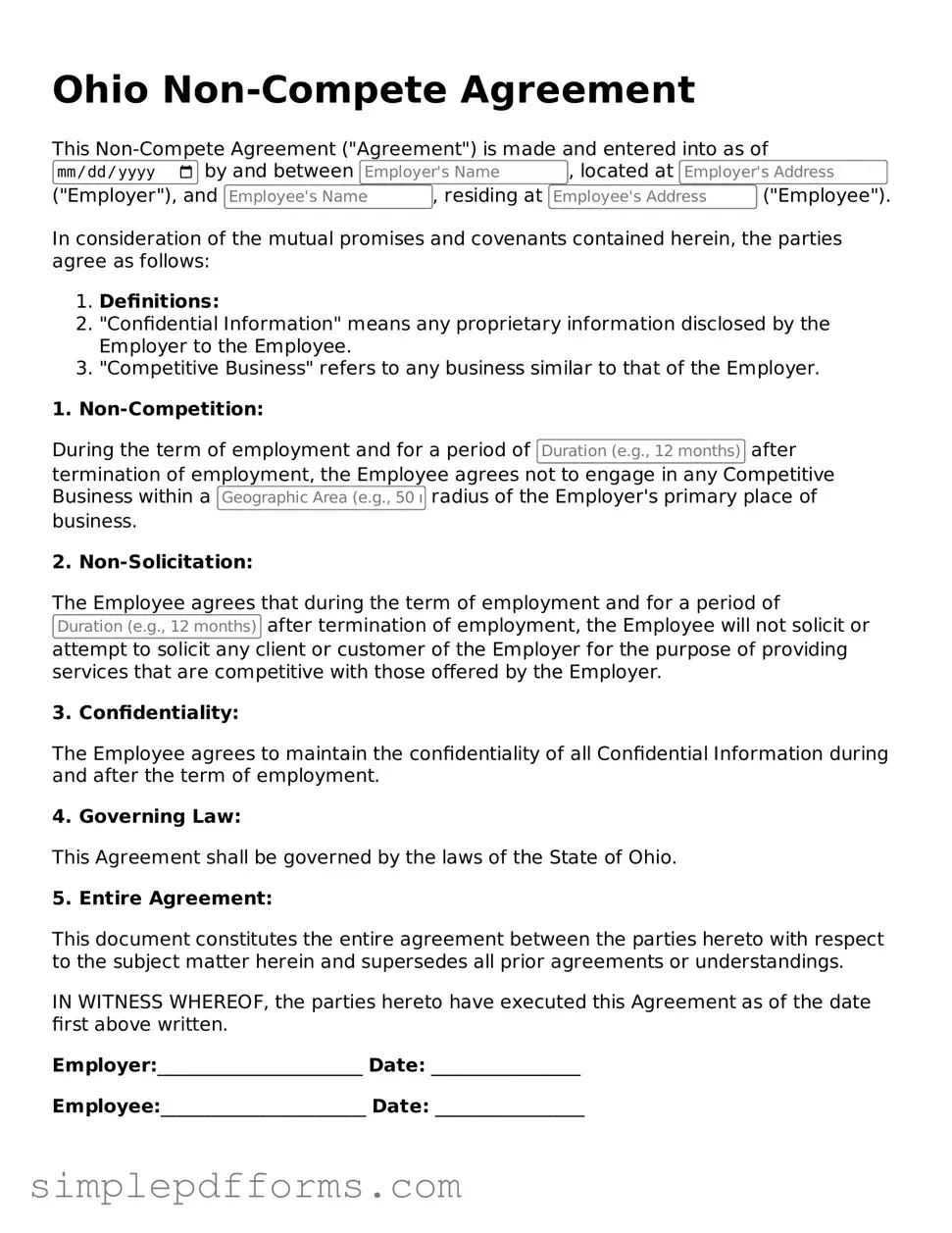Attorney-Verified Non-compete Agreement Document for Ohio State
A non-compete agreement is a legal document that restricts an employee from engaging in competitive activities with their employer after the employment relationship ends. In Ohio, this form outlines the specific terms and conditions under which such restrictions apply, aiming to protect business interests while balancing employee rights. Understanding the nuances of the Ohio non-compete agreement is essential for both employers and employees navigating the complexities of employment law.
Open Non-compete Agreement Editor Now
